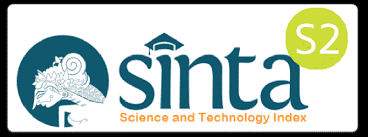VR's EFFICACY IN IMPROVING UPPER EXTREMITY MOTOR FUNGCTION IN STROKE PATIENTS
DOI:
https://doi.org/10.35730/jk.v14i1.932Keywords:
Motor Function, Muscle Strength, Upper Limbs, Virtual Reality, StrokeAbstract
Background: Stroke remains the second leading cause of death and the third combined cause of death and disability expressed by disability-adjusted lost life years (DALYs) in the world. Technological developments are used to provide more personalized and precise health services and are used for stroke prevention.
Purpose: The purpose of this literature review is to look at the Effectiveness of Increasing Upper Extremity Motor Function Based on Vertual Reality Technology in Stroke Patients.
Methods: The method used in the search for articles is database: Clinicalkey Nursing, EBSCOhost, EMBASE, ProQuest, Sage Journal, ScienceDirect, Scopus, SpringerLink and ClinicalKey.
Results: Based on a literature review of 5 selected articles, it was found that virtual reality is effective for improving upper extremity motor function in stroke patients.
Conclusion: Stroke patients can use virtual reality as a therapy to improve upper extremity motor function.References
A?k?n, A., Atar, E., Koçyi?it, H., & Tosun, A. (2018). Effects of Kinect-based virtual reality game training on upper extremity motor recovery in chronic stroke. Somatosensory & Motor Research, 35(1), 25–32. https://doi.org/10.1080/08990220.2018.1444599
Chen, Y. H., Chen, C. L., Huang, Y. Z., Chen, H. C., Chen, C. Y., Wu, C. Y., & Lin, K. chung. (2021). Augmented efficacy of intermittent theta burst stimulation on the virtual reality-based cycling training for upper limb function in patients with stroke: a double-blinded, randomized controlled trial. Journal of NeuroEngineering and Rehabilitation, 18(1), 1–15. https://doi.org/10.1186/s12984-021-00885-5
Feigin, V. L., Brainin, M., Norrving, B., Martins, S., Sacco, R. L., Hacke, W., Fisher, M., Pandian, J., & Lindsay, P. (2022). World Stroke Organization (WSO): Global Stroke Fact Sheet 2022. International Journal of Stroke, 17(1), 18–29. https://doi.org/10.1177/17474930211065917
Hakiki, S. N., Kosasih, C. E., Setyawati, A., Keperawatan, M. F., Padjadjarran, U., Kritis, D. K., Padjadjaran, U., Pertanyaan, I., Pra, K., Sakit, R., & Stroke, P. (2021). Studi Literatur : Scoping Review Gambaran Faktor Dalam Prehospital Delay Pada Pasien Stroke a Literature Study : an Illustration Factors in. 5(2), 656–671.
Ikbali Afsar, S., Mirzayev, I., Umit Yemisci, O., & Cosar Saracgil, S. N. (2018). Virtual Reality in Upper Extremity Rehabilitation of Stroke Patients: A Randomized Controlled Trial. Journal of Stroke and Cerebrovascular Diseases, 27(12), 3473–3478. https://doi.org/10.1016/j.jstrokecerebrovasdis.2018.08.007
Kemenkes RI. (2018). Hasil Riset Kesehatan Dasar Tahun 2018. Kementrian Kesehatan RI, 53(9), 1689–1699.
Permatasari, N. (2020). Perbandingan Stroke Non Hemoragik dengan Gangguan Motorik Pasien Memiliki Faktor Resiko Diabetes Melitus dan Hipertensi. Jurnal Ilmiah Kesehatan Sandi Husada, 11(1), 298–304. https://doi.org/10.35816/jiskh.v11i1.273
Salvalaggio, S., Kiper, P., Pregnolato, G., Baldan, F., Agostini, M., Maistrello, L., & Turolla, A. (2022). Virtual Feedback for Arm Motor Function Rehabilitation after Stroke: A Randomized Controlled Trial. Healthcare (Switzerland), 10(7), 1–14. https://doi.org/10.3390/healthcare10071175
Ul Ain, Q., Khan, S., Ilyas, S., Yaseen, A., Tariq, I., Liu, T., & Wang, J. (2021). Additional effects of xbox kinect training on upper limb function in chronic stroke patients: A randomized control trial. Healthcare (Switzerland), 9(3), 1–13. https://doi.org/10.3390/healthcare9030242




